24-year-old Aboriginal artist Presten Warren had not seen a sari up close until last year.
Today, his designs appear on a sari range created by Australia-based South Asian label Saree Selections – the first line of which has all sold out.
“I am overwhelmingly proud to know I was approached to collaborate on such a special blend of culture, art and fashion,” the award-winning artist and Wirangu/Dieri/Kokotha/Mirning man of the ocean and desert tribes, told Indian Link.
“I understand how significant and meaningful saris are to Indian women, and to feature something I created on these traditional garments, is really quite surreal.”
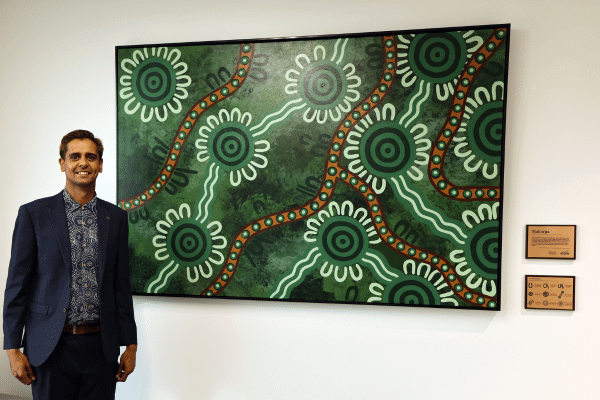
The label’s Sydney-based founders Shivanie Dheeraj and Dheeraj Kumar Machinella were themselves drawn to Aboriginal art and culture only recently.
“We observed a growing awareness of – and respect for – Traditional Owners at our day jobs in the government sector,” Shivanie Dheeraj revealed. “That gave us inspiration. We thought, we’ve never seen Aboriginal designs on saris.”
Shivanie, who was born and raised in Sri Lanka, co-founded Saree Selections with her Indian husband in 2022.
“We are very proud and privileged to have Presten Warren involved in our project,” she told Indian Link.

Saree Selections has now collaborated with Presten on at least 30 limited edition pieces.
“We signed contracts with him for his artwork, and the royalties go to him for every sari we sell,” Shivanie said.
Saris with Presten’s Aboriginal designs are produced in India – first woven from pure handloom silk, and then finished off with a gold zari border in the Pochampalli style.
A second line of saris, digitally printed and therefore slightly lower priced, is designed in Australia but made in India, printed on a variety of fabrics including premium American georgette, heritage handloom fabric, and Gajji silk.
With their bright colours and eye-catching designs, both the handloom and digital prints would win you compliments at a cocktail event as well as a formal event where traditional attire is the dress code.
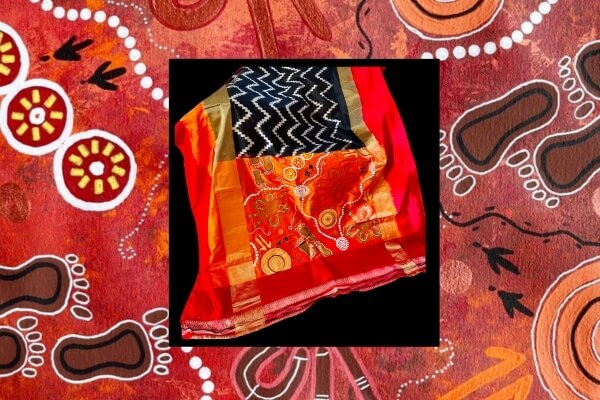
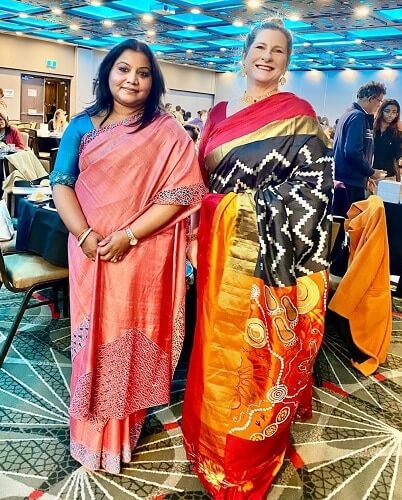
The collaboration has not only been commercially successful, it has also been an exercise in cultural awareness for both parties. “It’s true I only had a very limited knowledge of the Indian sari until recently, just what I had seen in movies,” the South Australia-based award-winning artist Presten said.
He now observes the designs when he sees Indian women out in public, especially when he travels to the cities. “I love seeing the amazing patterns and different colours representing different Indian cultures and families. I think it is such a beautiful concept. I can tell it’s a special tradition and very important to Indian women and that the designs and colours are just stunning!”
Shivanie admitted, for her part, “I’m still learning, to be honest. Aboriginal art is protected, and they call their own community a Country, so each Country has their own symbols to depict nature and their environment. No two Countries can represent the same artwork. It’s unique.”
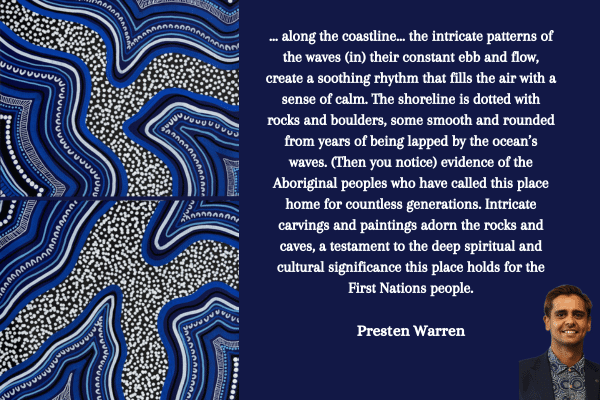
Presten Warren is particularly touched about the date set for the launch last year.
“It means a lot to me that Shivanie chose to launch the limited edition range in honour of Reconciliation Week, and in support of the YES23 campaign.”
The launch took place at the Community Migrant Resource Centre in Sydney.
His work has previously been licensed by BHP for staff uniforms. That design came from his piece ‘Camping Under the Stars’, for which he won the 2023 Kokatha/Carrapateena PPE Art Competition. It is a statement about respect for the environment, sustainability, communication and the importance of sharing resources.
An altered version of the piece can now be seen on a Shivanie sari, with colours changed “so it came across more feminine and gentle to the eye,” Presten revealed.
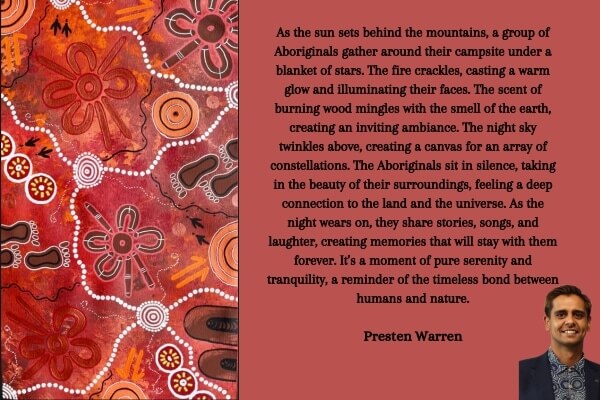
Describing the artwork, he said, “The campsite is an experience of connection between people (who gather around a crackling fire and share stories, songs and laughter); but it is also one of people connecting with nature (as they smell the earth and gaze upon the stars above, in serenity and tranquillity).”
Despite its success, Shivanie said ‘Camping Under the Stars’ isn’t her favourite Presten Warren work.
A design he produced in the lead-up to the 2023 Referendum on an Aboriginal and Torres Strait Islander Voice stole her heart.
“We asked him if he could paint something that comes to his mind when he thinks of the Yes Campaign,” she said. “That work is very close to my heart because he wanted to communicate what it means to him.”
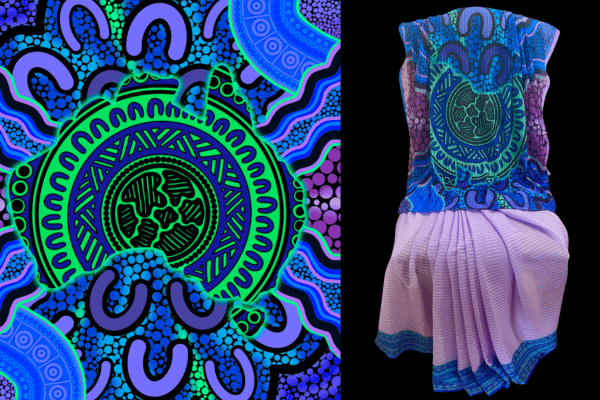
What’s in the future for this exciting new collab?
Projects are in the pipeline for Aboriginal designs on scarves and pocket squares, and of course, look out for plenty more in saris.
READ ALSO: Jarracharra: Australian textile art in India




